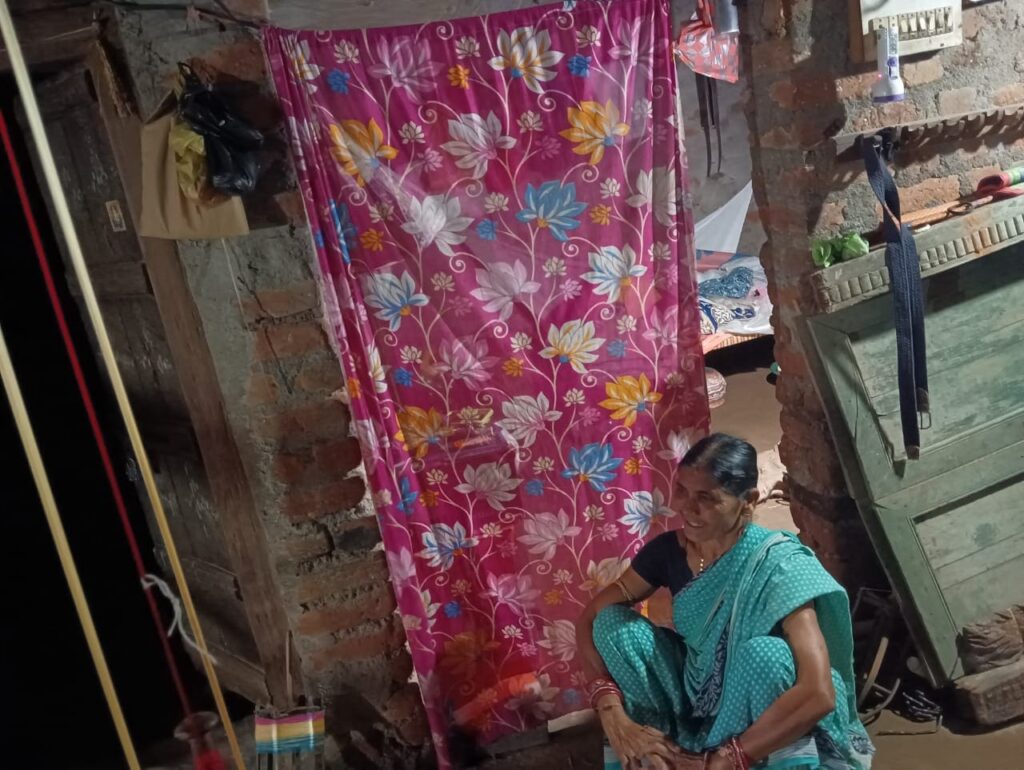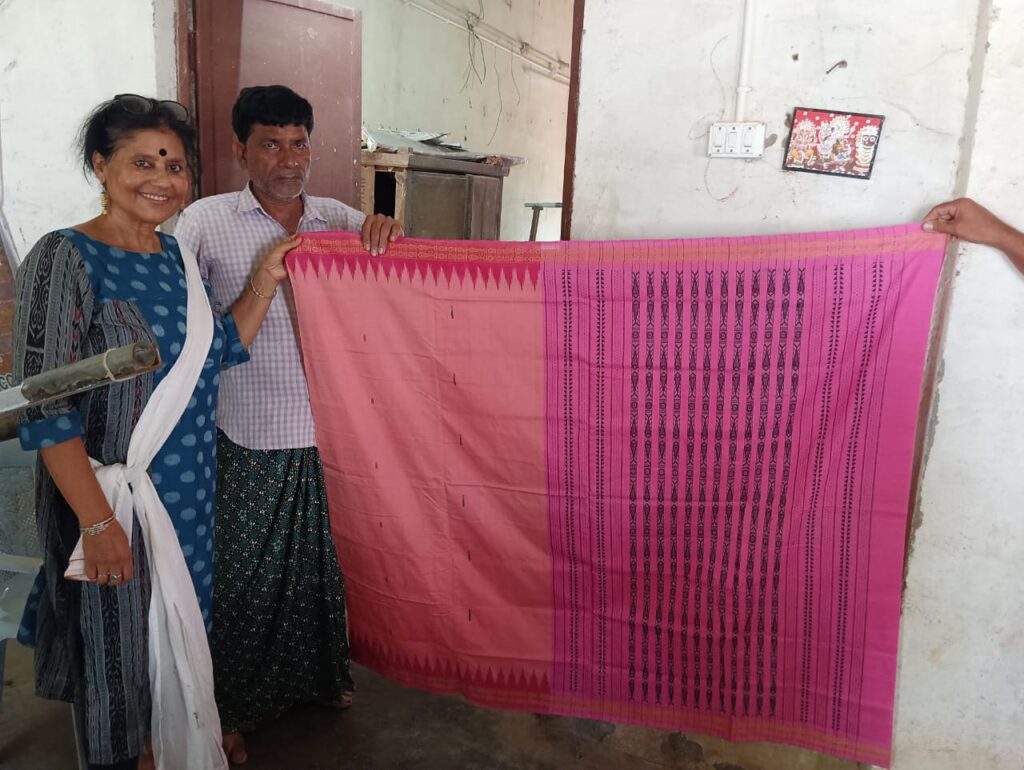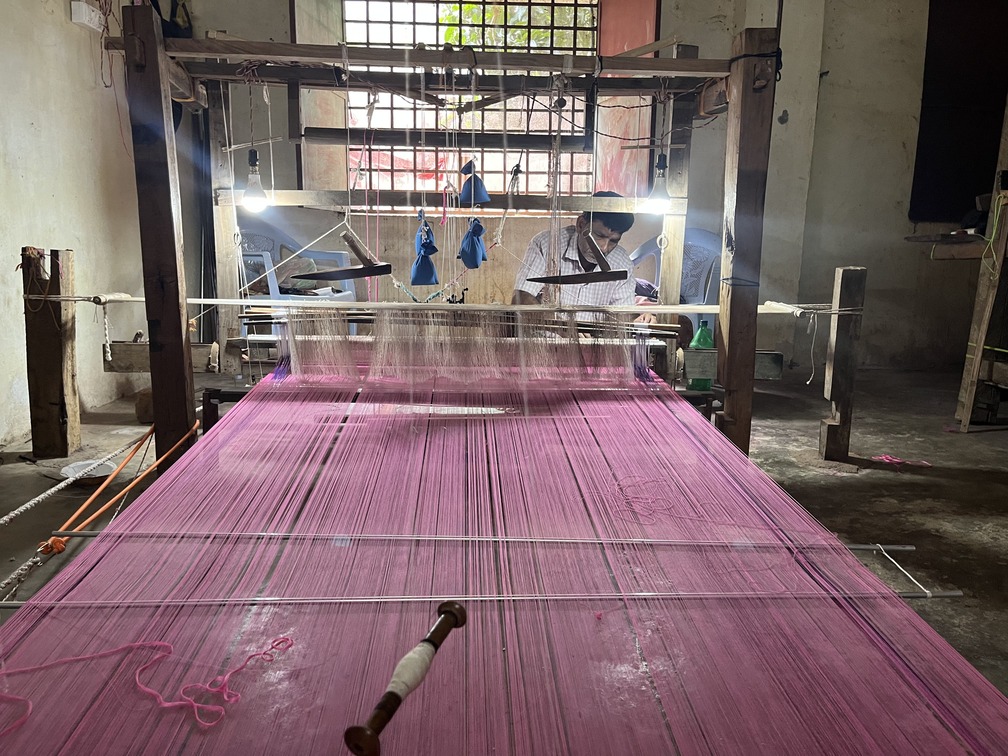While the textiles have made their mark as this region’s original weave, these gorgeous saris still need to be more popular among consumers and sari enthusiasts.
I had never heard of the Habaspuri handloom sari, even though I have worked with weavers in different parts of Odisha since 2007. This year, in August, while at a conference in Bhubaneswar, I learned about Kalahandi village, and about the weavers known for their exquisite jala weave of ethnic motifs on the border, body, and pällu. This complicated labor-intensive weave does not get recognized in society nor fetch its market value. Ultimately, the poor weavers suffer, leading to their near extinction.

Nibedita Nath, an anthropology professor at Kalahandi University in Bhawanipatna, had brought a Habaspuri sari for a mutual friend, and I could not take my eyes off it. That’s when she told me about the only four to five Bhulia caste weavers in Chicheguda village in Kalahandi, a district in southern Odisha, who are the makers of the Habaspuri saris. But their number is dwindling, she added.
I was intrigued by what Nath told me and I was determined to visit Chicheguda, known for its picturesque hills, forests, and diverse indigenous people inhabiting the land. So when the anthropology department at Kalahandi University invited me for a lecture, I decided to visit Chicheguda.
I visited Chicheguda about 37 miles from Bhawanipatna accompanied by Prof. Nath and two of her doctoral students. On the way, we stopped at a famous Sakti pith, Lankeswari (mother goddess), in Junagadh (the old capital of Kalahandi).

We visited the Chicheguda Handloom Cooperative Society which was built in cooperation with the government. We met Jalandhar Meher and Subodh Meher who were weaving beautiful cotton saris on their pit loom. They told us that although the society was formed to facilitate the weaving and training of weavers and the marketing of final products, they would prefer to sell their saris individually. The government buys these saris from the weavers at discounted prices so they can be sold at government-run stores.
We also visited the home of Pradeep Meher and his wife Sulochana, one of the few four or five weavers families in the entire village who make Habaspuri sari. The weavers at the cooperative society had warned us not to go to the village because of our unfamiliarity with rain-soaked, narrow, muddy roads. But we asked people around and found our way to Meher’s home at the end of a narrow road leading to the paddy fields.
Meher was sitting in the front room on a loom, weaving a beautiful purple and red silk sari. Meanwhile, Sulochana Meher was finishing her chores, feeding the cows and the chickens in the front yard. The house was modest, a combination of brick and mud, partly thatched roof and part concrete under the prime minister’s Awas Yojana. The kitchen was sparse, with a few brass pots and pans and a wood stove on the mud floor.
Meher weaves saris for the cooperative society and earns his wage in proportion to the days he takes to finish it. A silk sari takes about 15 days, and he hardly makes Rs. 300 ($4) daily. It’s tough to be a weaver, Meher said, explaining that, unlike any other wage labor, this work needs utmost concentration — at least eight to ten hours a day of sitting at the loom. If he takes a couple of hours of break, it is not easier to get back to weaving because of the interruption, and it takes longer to complete the saris. Both of them echoed that it is backbreaking work. Sulochana Meher does the dying of the thread and prepares it for the loom. However, they informed me that their son has decided not to take up weaving. When asked if the government has been helping the weavers, Meher disagreed. He said the silk price has doubled in a year from Rs. 4,400 ($50) per kilo to Rs. 8,700 ($105), and they have to sell the sari at a discount for the government cooperative.

Origins of Habaspuri Sari
The name of the sari comes from the village of Habaspur in Kalahandi district, where the Kandha tribe wove it for centuries. During British rule, the Kandhas lost the patronage of the Maharajas and were dispersed and stopped from making the saris. Unfortunately, I could not go to the original Habaspur village. Now, the Bhulia weavers of Chicheguda village are weaving the design brought by Ugrasen Meher in the same village.
The Habaspuri sari is made chiefly of cotton and silk and is known for its beautiful jala and dobi design, different from the ikkat common in other parts of Odisha. Its uniqueness lies in its weaving and ethnic motifs like Kumbha (temple), fish, flowers, turtles, and tribal wall art of the region on the saris. It has been identified as one of the 14 geographical indications (GI) of the Odisha-Habaspuri sari originating in this region. The GI tag ensures the originality of the region using the popular product name.
Recently, a local designer, Sujit Meher, has been promoting Habaspuri handloom. Hailing from the weaver community of Dharamgarh in the Kalahandi district, he has opened a boutique named Tilottama, in Kalahandi to popularize local textiles.
While Habaspuri has made its mark as this region’s original weave and got GI recognition, it still needs to be more popular among consumers. The weavers need to make a living from these saris. In the synthetic age, beautiful cotton and silk are less appreciated for the price, maintenance, and simplicity. My sincere appeal to handloom enthusiasts is to wear local, promote and popularize them to benefit the consumers, the weavers, the environment, and the society.




